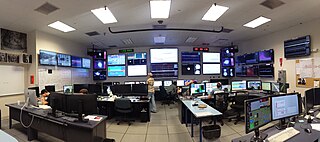
The Laser Interferometer Gravitational-Wave Observatory (LIGO) is a large-scale physics experiment and observatory designed to detect cosmic gravitational waves and to develop gravitational-wave observations as an astronomical tool. Two large observatories were built in the United States with the aim of detecting gravitational waves by laser interferometry. These observatories use mirrors spaced four kilometers apart which are capable of detecting a change of less than one ten-thousandth the charge diameter of a proton.

The Max Planck Institute for Gravitational Physics is a Max Planck Institute whose research is aimed at investigating Einstein's theory of relativity and beyond: Mathematics, quantum gravity, astrophysical relativity, and gravitational-wave astronomy. The institute was founded in 1995 and is located in the Potsdam Science Park in Golm, Potsdam and in Hannover where it closely collaborates with the Leibniz University Hannover. Both the Potsdam and the Hannover parts of the institute are organized in three research departments and host a number of independent research groups.

GEO600 is a gravitational wave detector located near Sarstedt, a town 20 km to the south of Hanover, Germany. It is designed and operated by scientists from the Max Planck Institute for Gravitational Physics, Max Planck Institute of Quantum Optics and the Leibniz Universität Hannover, along with University of Glasgow, University of Birmingham and Cardiff University in the United Kingdom, and is funded by the Max Planck Society and the Science and Technology Facilities Council (STFC). GEO600 is capable of detecting gravitational waves in the frequency range 50 Hz to 1.5 kHz, and is part of a worldwide network of gravitational wave detectors. This instrument, and its sister interferometric detectors, when operational, are some of the most sensitive gravitational wave detectors ever designed. They are designed to detect relative changes in distance of the order of 10−21, about the size of a single atom compared to the distance from the Sun to the Earth. Construction on the project began in 1995.

Aundha Naganath is a town in the Aundha Nagnath subdivision of Hingoli district. It lies in the Marathwada region of the Indian state of Maharashtra. The town is known for the Aundha Nagnath Temple, it is the 8th Jyotirling out of 12 which is dedicated to Shiva. The famous tourist spot along with the Temple includes the beautiful Garden and the Reserved Forest Region on the outskirts of the town.

A gravitational-wave detector is any device designed to measure tiny distortions of spacetime called gravitational waves. Since the 1960s, various kinds of gravitational-wave detectors have been built and constantly improved. The present-day generation of laser interferometers has reached the necessary sensitivity to detect gravitational waves from astronomical sources, thus forming the primary tool of gravitational-wave astronomy.
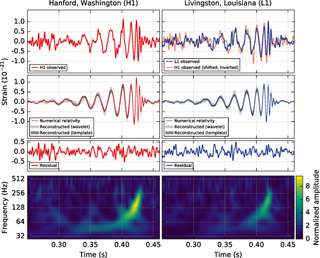
Gravitational-wave astronomy is an emerging field of science, concerning the observations of gravitational waves to collect relatively unique data and make inferences about objects such as neutron stars and black holes, events such as supernovae, and processes including those of the early universe shortly after the Big Bang.
The LIGO Scientific Collaboration (LSC) is a scientific collaboration of international physics institutes and research groups dedicated to the search for gravitational waves.
The Australian International Gravitational Observatory (AIGO) is a research facility located near Gingin, north of Perth in Western Australia. It is part of a worldwide effort to directly detect gravitational waves. Note that these are a major prediction of the general theory of relativity and are not to be confused with gravity waves, a phenomenon studied in fluid mechanics.
David Howard Reitze is an American laser physicist who is professor of physics at the University of Florida and served as the scientific spokesman of the Laser Interferometer Gravitational-Wave Observatory (LIGO) experiment in 2007-2011. In August 2011, he took a leave of absence from the University of Florida to be the Executive Director of LIGO, stationed at the California Institute of Technology, Pasadena, California. He obtained his BA in 1983 from Northwestern University, his PhD in physics from the University of Texas at Austin in 1990, and had positions at Bell Communications Research and Lawrence Livermore National Laboratory, before taking his faculty position at the University of Florida. He is a Fellow of the American Physical Society, the Optical Society, and the American Association for the Advancement of Science.
The Gravitational Wave International Committee is a panel of gravitational wave detection Laboratory or Observatory directors that promotes cooperation and collaboration between the gravitational wave detector projects and provides direction and advice on the future development of the field. Barry Barish founded the GWIC in 1997 and served as the chair from 1997-2003.
Siddheshwar Dam is an earth-fill dam on Purna River, which is a tributary of River Godavari. This dam is located in the north-western part of Aundha Nagnath, in the Hingoli district of Maharashtra, India.
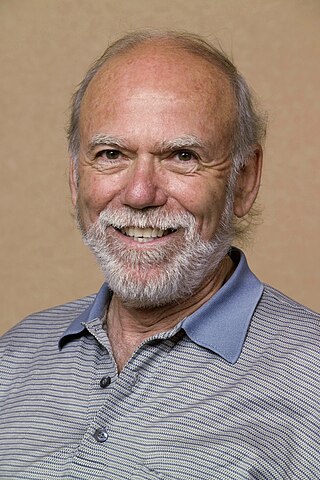
Barry Clark Barish is an American experimental physicist and Nobel Laureate. He is a Linde Professor of Physics, emeritus at California Institute of Technology and a leading expert on gravitational waves.

Sekhar Basu was an Indian nuclear scientist who served as the chairman of the Atomic Energy Commission and Secretary to the Government of India, Department of Atomic Energy (DAE). He also served as the Director of Bhabha Atomic Research Centre (BARC), the Project Director of Nuclear Submarine Program, and later as the Chief Executive of the Nuclear Recycle Board at Bhabha Atomic Research Center. He was a recipient of India's fourth highest civilian honor Padma Shri in 2014.

The first direct observation of gravitational waves was made on 14 September 2015 and was announced by the LIGO and Virgo collaborations on 11 February 2016. Previously, gravitational waves had been inferred only indirectly, via their effect on the timing of pulsars in binary star systems. The waveform, detected by both LIGO observatories, matched the predictions of general relativity for a gravitational wave emanating from the inward spiral and merger of a pair of black holes of around 36 and 29 solar masses and the subsequent "ringdown" of the single resulting black hole. The signal was named GW150914. It was also the first observation of a binary black hole merger, demonstrating both the existence of binary stellar-mass black hole systems and the fact that such mergers could occur within the current age of the universe.
Sanjeev Dhurandhar is Professor at IUCAA, Pune. His research interest is detection and observation of Gravitational waves. Dhurandhar was part of the Indian team which contributed to the detection of gravitational waves. He is the science advisor to the IndIGO consortium council.
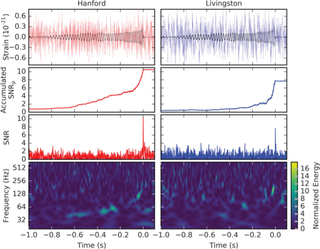
GW151226 was a gravitational wave signal detected by the LIGO observatory on 25 December 2015 local time. On 15 June 2016, the LIGO and Virgo collaborations announced that they had verified the signal, making it the second such signal confirmed, after GW150914, which had been announced four months earlier the same year, and the third gravitational wave signal detected.
David Ernest McClelland is an Australian physicist, with his research focused on the development of the manipulation and control of optical quantum states, and its implementation into gravitational wave observatories. He is a Fellow of the Australian Academy of Science, the American Physical Society and the Optical Society of America. Since 2001, he has been a professor at the Australian National University (ANU) in the Research School of Physics and Engineering, in Canberra (Australia). He is Director of the ANU's Centre for Gravitational Astrophysics and Deputy Director of OzGrav - the Australian Research Council Centre of Excellence in Gravitational Wave Discovery.
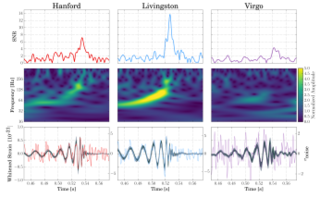
GW170814 was a gravitational wave signal from two merging black holes, detected by the LIGO and Virgo observatories on 14 August 2017. On 27 September 2017, the LIGO and Virgo collaborations announced the observation of the signal, the fourth confirmed event after GW150914, GW151226 and GW170104. It was the first binary black hole merger detected by LIGO and Virgo together.
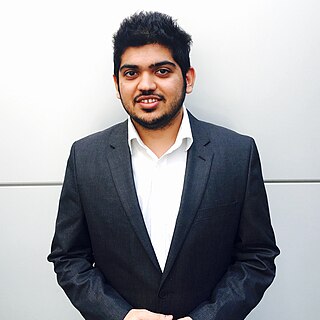
Karan Jani is an Indian astrophysicist working on black holes, gravitational waves, and testing Albert Einstein's General Theory of Relativity. He is currently an assistant professor of physics and astronomy at Vanderbilt University, and holds the endowed position of Cornelius Vanderbilt Dean’s Faculty Fellow. He has worked at the LIGO Livingston Observatory in the US, the Albert Einstein Institute in Germany, the Georgia Institute of Technology, and the Perimeter Institute for Theoretical Physics in Canada. He is a member of the Indian Initiative in Gravitational-wave Observations effort to build a gravitational wave detector LIGO in India.

Rana X. Adhikari is an American experimental physicist. He is a professor of physics at the California Institute of Technology (Caltech) and an associate faculty member of the International Centre for Theoretical Sciences of Tata Institute of Fundamental Research (ICTS-TIFR).















